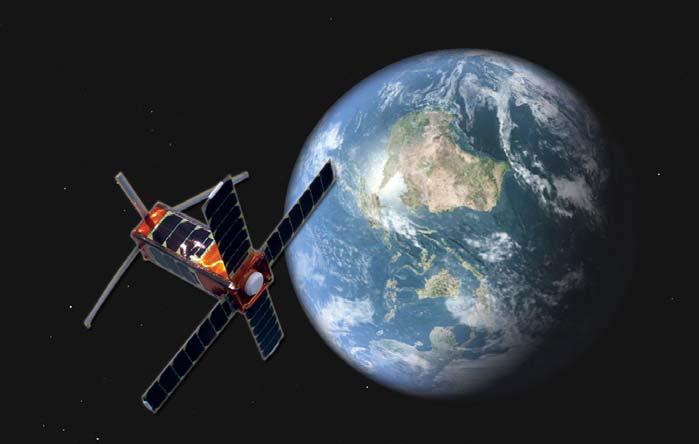Their research work is competing in the 2010 Young Scientists and Developers Competition held next week by the Bloomfield Science Museum in Jerusalem under the auspices of "Intel"

Next year (2011) the Israeli association for small satellites INSA will launch a nano-satellite, the first of its kind in Israel, called InKlajn1. Three young scientists participating in the Young Scientists Competition: Uriah Shavit, Yonatan Shamir, Daniel Toma from Herzliya Engineering High School, developed the antenna system for the first Israeli nano satellite.
The purpose of the project is to design the antenna system for the first Israeli nanosatellite to be launched into space in 2011 by the Israeli Association for Small Satellites. The biggest difficulty that must be faced in the mission of launching the nanosatellite is preventing a failure in the communication system. This type of failure could cause the satellite to continue circling the sky with the systems still operating but its transmitters too weak to be received on the ground. The purpose of the work is to ensure that a failure does not occur in the satellite's communication system. Using an experiment to measure the radiation curve, we designed the antenna system and produced recommendations on the location of the antennas and their type.
These recommendations are now being implemented in the process of building the satellite. We mapped the radiation curve by rotating the antennas so that in every direction we measured the transmission strength.
For the sake of the experiment, the three developed scientific tools, including an algorithm that is an approximate general solution to the Thomson problem, for which a general solution has not yet been found. They also developed software that controls a signal processor for data reception. And in addition to several devices for rotating the antennas, we chose one of them, and developed a mathematical model for it.
Lilach Dari from the Herzliya High School of Engineering also conducted research on the subject: reception and decoding of telemetry for the first Israeli nano-satellite. A satellite that will serve as a relay station for radio enthusiasts, as a cheap generic laboratory for testing new Israeli space components, and will open a new era of cooperative satellites in an open source format.
Her project is part of the communication system between the satellite and the ground. Its purpose is to reduce the hardware in the nano-satellite ground station by using existing hardware and free and open-source software while taking into account the limitations of the satellite: transmission, transmission frequency, price of a ground station, use of radio enthusiasts as a community to download telemetry and types of services that the satellite provides to the community of radio enthusiasts. As part of the project, she managed to plan and realize a simple and cheap ground station for the first Israeli nanosatellite. The innovation in the project was expressed in the use of software that is available free of charge and in the replacement of external components with components that already exist in the computer, taking into account the limitations of the satellite. This allows radio enthusiasts, and basically anyone who has a receiver, to receive satellite broadcasts without special equipment. The project is done in an open source format, which gives self-operation capability to anyone who wants to experiment with setting up a ground station at home and also makes it easier for small scientific research organizations to conduct experiments with the help of the satellite. In addition, I wrote an instruction booklet for running the decoding software at the ground station.
In the same topic on the science website:
